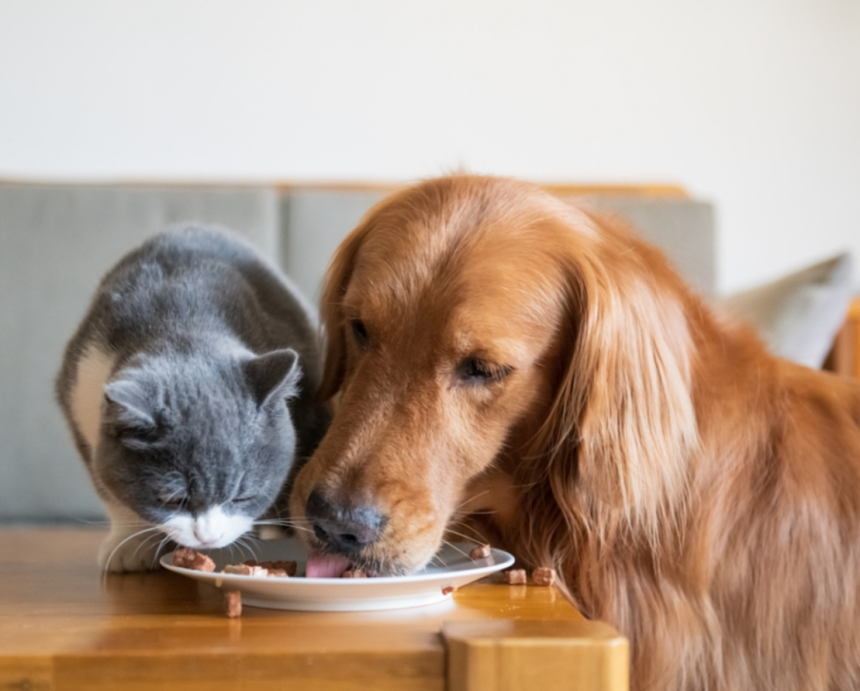With the myriad of pet food options available in the market, deciphering pet food labels can feel like interpreting a foreign language. However, understanding these labels is crucial for your pet’s overall health and well-being. Let’s dive in, shall we?
Understanding Pet Nutrition
Every pet owner wants the best for their furry friend, and that includes providing them with the right nutrition.
Importance of a Balanced Diet
Just as humans need a well-rounded diet, our pets do too. A balanced diet ensures they get all the essential nutrients, promoting optimal growth, maintaining body functions, and keeping them active.
The Role of Protein in Pet Food
Proteins are the building blocks of life. For carnivorous pets like cats, high-quality meat-based protein is crucial. Even our herbivore and omnivore friends require their fair share of proteins to maintain muscle health.
The Significance of Fats and Oils
Fats provide the most concentrated source of energy. Essential fatty acids, such as omega-3 and omega-6, play a vital role in brain development, skin health, and more.
Decoding Carbohydrates
While not a primary energy source for many pets, carbs offer quick energy and are essential for brain function. Choosing complex carbohydrates can help prevent obesity in pets.
Navigating the Complex World of Pet Food Labels
Now that you understand the basics of pet nutrition, how do you navigate the maze of pet food labels?
Key Ingredients to Look For
Look for high-quality protein sources, like chicken, beef, or fish, as the first ingredient. Ensure there are recognizable whole foods and no by-products.
Ingredients to Avoid
Stay away from artificial colors, flavors, and preservatives. Avoid foods with generic meat or grain sources, which can be of inferior quality.
Organic Vs. Non-Organic Labels
Organic pet foods use ingredients free from pesticides and antibiotics. While they can be pricier, they offer a purer nutritional profile.
The Link between Proper Nutrition and Health Issues
Diet plays a critical role in your pet’s overall health.
Common Food-Related Allergies in Pets
Just like humans, pets can develop allergies. Common allergens include beef, dairy, wheat, and more. These can lead to skin issues, digestive problems, and respiratory concerns.
The Cost of Ignoring Nutrition
Neglecting proper nutrition can lead to obesity, heart diseases, and decreased immunity, which can be costly in the long run.
The Safety Net: Pet Insurance
So, what happens when things go south?
How Insurance Covers Food-Related Issues
Pet insurance can cover the diagnosis, treatment, and management of food-related allergies. This can be a lifesaver, especially with rising veterinary costs.
The Benefits of Having Pet Insurance
Investing in pet insurance ensures that your pet gets the best care without breaking the bank.
Peace of Mind
Knowing you’re covered in case of emergencies provides peace of mind.
Financial Benefits
With insurance, you can avoid hefty out-of-pocket expenses for treatments.
Conclusion
Deciphering pet food labels is vital for your pet’s health. With the right nutrition, you can prevent numerous health issues. And, for those unforeseen problems, having pet insurance offers a valuable safety net.
FAQs
- Why is high-quality protein essential for pets?
- High-quality protein provides essential amino acids necessary for muscle growth and repair.
- What are the signs of food allergies in pets?
- Symptoms include itching, skin rashes, digestive issues, and respiratory problems.
- How does pet insurance help with food-related issues?
- Pet insurance can cover diagnostic tests, treatments, and medications related to food allergies.
- Are organic pet foods always better?
- While organic foods offer purer ingredients, it’s essential to ensure they provide a balanced diet.
- How often should I switch my pet’s food?
- It’s best to consult with a veterinarian. Frequent changes can upset a pet’s digestive system.













